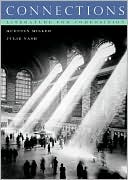Category Books
- Fiction Books & Literature
- Graphic Novels
- Horror
- Mystery & Crime
- Poetry
- Romance Books
- Science Fiction & Fantasy
- Thrillers
- Westerns
- Ages 0-2
- Ages 3-5
- Ages 6-8
- Ages 9-12
- Teens
- Children's Books
- African Americans
- Antiques & Collectibles
- Art, Architecture & Photography
- Bibles & Bible Studies
- Biography
- Business Books
- Christianity
- Computer Books & Technology Books
- Cookbooks, Food & Wine
- Crafts & Hobbies Books
- Education & Teaching
- Engineering
- Entertainment
- Foreign Languages
- Game Books
- Gay & Lesbian
- Health Books, Diet & Fitness Books
- History
- Home & Garden
- Humor Books
- Judaism & Judaica
- Law
- Medical Books
- New Age & Spirituality
- Nonfiction
- Parenting & Family
- Pets
- Philosophy
- Political Books & Current Events Books
- Psychology & Psychotherapy
- Reference
- Religion Books
- Science & Nature
- Self Improvement
- Sex & Relationships
- Social Sciences
- Sports & Adventure
- Study Guides & Test Prep
- Travel
- True Crime
- Weddings
- Women's Studies
Connections: Literature for Composition » (1st Edition)

Authors: Quentin Miller, Julie Nash
ISBN-13: 9780618481149, ISBN-10: 0618481141
Format: Paperback
Publisher: Cengage Learning
Date Published: September 2007
Edition: 1st Edition
Author Biography: Quentin Miller
Quentin Miller is Associate Professor of English at Suffolk University in Boston, where he teaches composition, fiction writing, and literature. He is the author of JOHN UPDIKE AND THE COLD WAR, and the editor of RE-VIEWING JAMES BALDWIN: THINGS NOT SEEN. He is also the editor of the forthcoming PROSE AND CONS: NEW ESSAYS ON CONTEMPORARY U.S. PRISON LITERATURE, and coauthor of the literature for composition textbooks CONNECTIONS. His articles have appeared in such journals as "American Literature", "Legacy:
Book Synopsis
This innovative thematic anthology helps students make connections among works of literature from different eras and cultures; works of literature and life experiences; works of literature and works of art, as well as other visual images; and different genres and themes. With more than 150 literary selections, Connections presents a diverse mix of classic, modern, and contemporary voices spanning cultures and genres. Arranged around six timely and timeless themes, the selections are relevant and thought provoking to students. Collectively these thematic clusters form a coherent, yet flexible, Literary Exploration of Human Nature," including: (1) obedience and rebellion; (2) love and lust; (3) honesty and deception; (4) vengeance and forgiveness; (5) industry and indulgence; and (6) greed, gluttony, and generosity. Each of the six thematic sections concludes by focusing on "Common Characters" that students will recognize: Icarus, Don Juan, the Trickster, the Prodigal Son, the Rags-to-Riches Figure, and the Gambler."
Table of Contents
I. Reading, Writing, and Argument 1. Reading Literature Thinking Critically about Human Nature Animal Nature: Reading Allegories Mark Twain, "A Fable" The Nature of Reading Nikki Giovanni, "Woman" 2. Writing about Literature Why Write? What Do I Know? Audience Getting Started The Reading Journal Outlining, Brainstorming, and Freewriting Annotating and Questioning a Text Illustration of Prewriting: Collette's "The Other Wife" Colette, "The Other Wife" (Translated by Matthew Ward) The Drafting Process The Fir
Subjects
 Anthologies
Anthologies  General & Miscellaneous Literature Anthologies
General & Miscellaneous Literature AnthologiesEducation & Teaching
 Teaching & Teacher Training
Teaching & Teacher Training  Teaching - Literature
Teaching - LiteratureReference
 English-language Reference
English-language Reference  English Language Readers
English Language ReadersReference
 Writing
Writing  Academic & Research Paper Writing
Academic & Research Paper WritingNonfiction
 Reference
Reference  English-language Reference
English-language ReferenceNonfiction
 Reference
Reference  Writing
Writing
